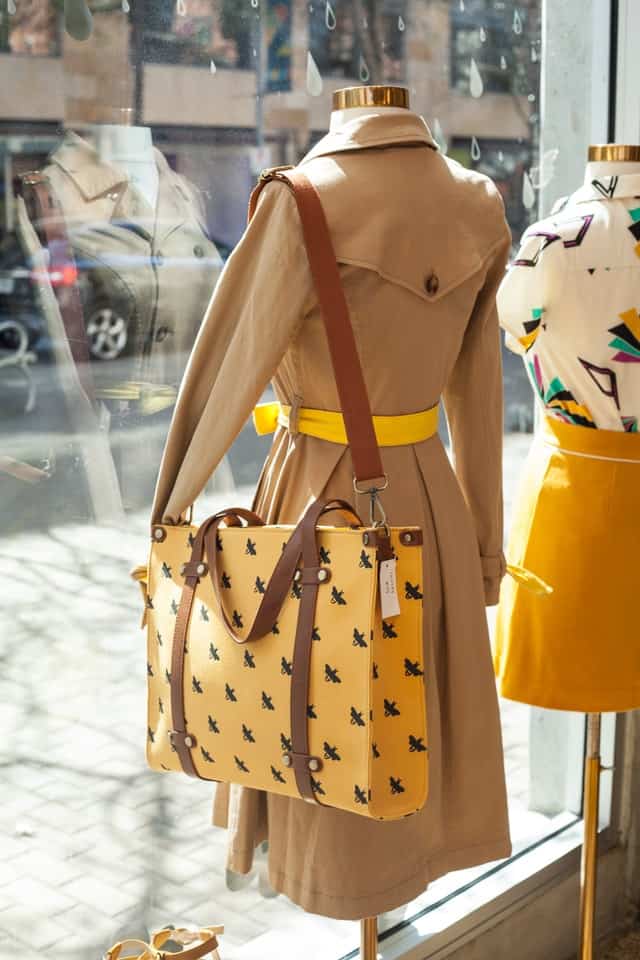Introduction
Retail can be considered “the last mile” for fashion companies, as it’s the last element of separation between a firm’s products and its consumers. At the same time, however, from a customer perspective retail is the point of access to the brand, and the first ‘moment of truth’, when it comes to testing the brand’s appeal.
Thinking about a retail store as the place where ultimate moment of truth takes place can be very stressful, as all of the processes which happen ‘behind the curtains’ in the fashion pipeline, will not translate into value to the end consumer unless we plan for that to happen.
In this article, we are going to discuss the main decisions that fashion firms need to make in order to make sure that their retail and logistics operations are able to withstand the standards required by the fast-paced consumer market.
In this article we are going to discuss:
- Management of retail logistics in fashion
- The sales process for fashion firms
- Retail management decisions for fashion firms
- Customer relationship management in retail
- Conclusions
1. Management and retail logistics in fashion
The production and distribution process in the fashion industry entails for 4 fundamental stages: forecast, production, launch, sales and delivery. In higher-end firms the completion of this process takes months, in the case of fast fashion companies however, it can start up to only 6 weeks.
There are two fundamental approaches to managing logistics and catering to customers in retail: make to order, or make to stock.
In the first category of retail management, firms only produce higher volumes of a product only once the orders have been collected by trade clients. This is more typical in high-end fashion. This approach is motivated by the high cost of materials and labour that a single item can entail and as a result, companies would not be able to afford any excess production.
In the second category of retail management companies produce higher volumes of products even before collecting orders. This does not mean that they are ‘shooting in the dark’ they are actually grounding their decisions on the sales reports from the previous seasons. This approach is the one pursued by fast fashion retailers who are able to gain higher profit margins by accessing economies of scale.
In both cases, the production process makes strategic quantitative decisions on the grounds of the previous seasonal business performance in order to maintain a connection to the customers and to the market. This is much easier to do with fast fashion companies, on the other hand, however, as these firms may not have a clear stylistic identity, and follow trends, they may have a harder time building their own brand identity.
2. The sales process in fashion firms
The sales process for fashion firms is an essential step in a firm’s operations. In the sales process, fashion firms are required to deliver both tangible and intangible elements describing the proposed seasonal collection.
To be ‘fashionable’, firms are required to convey a collection’s mood, as well as a selection of distinctive creative elements which provide the collection’s stylistic identity. Moreover, during sales meetings with trade partners they firms present technical elements, which pertain to the technologies, processes and fabrics used for the physical creation of the collection.
Fashion firms set sales objectives and then work with a sales force to push the collection down the distribution channels. In this sense, firms may work in two formats: they either work through agents or work through company showrooms.
Agents may provide cheaper costs, as they are paid on the grounds of what they are able to sell. On the other hand, working with agents may provide challenges, as the firms are not able to fully control the sales process, as an agent will develop hisher own network of connections and consider them private assets.
Using showrooms to sell collections may be more expensive as they entail for the management of a physical location where the merchandise can be displayed. The benefits of managing a showroom consist in allowing companies to manage the sales process more directly and efficiently, using the showroom as a means to focus on those items which the firms wish to sell more, according to its specific strategic vision.
A firm’s sales department is also accountable for assisting trade-clients in effectively deliver a brand’s image. Fashion firms help trade customers in displaying merchandise in the store, as well as in replacing defective items and replenishing inventory.
3. Retail management decisions for fashion firms
When it comes to retail management decisions, fashion firms have a wide choice of options regarding both direct and indirect distribution channels or retail formats they wish to adopt.
Retail can be both specialised or non-specialised. In the case of non-specialised we have:
- Department Stores
- Hypermarkets
- Mail Orders and Rentals
In the case of specialised retail instead we have:
- Speciality chains usually focused on a specific target or product, client or occasion.
- Independent stores, either single brand and multi-brand.
Managers in fashion firms will need to make distribution choices by focusing on the company’s long term strategy, but also defining distribution policies and operational processes at the store level.
On the one hand, to their distribution mix companies decide to pursue a variety of retail strategies which can consist in accessing the market:
- Through direct, retail channels
- Through indirect, wholesale channels
- Through transnational retail: via an e-commerce platform or travel retail.
Retail formats, on the other hand, are split into two main formats: retail and wholesale.
Retail formats comprehend:
- Flagship stores. These are particularly important, and they are addressed in more detail in this separate post: Flagship Stores and the Future of Retail.
- Self-standing stores. These stores, are the more traditional high-street stores located in commercial areas of a city.
- Shop in shop. In this case, a firm has a shop within a larger mall environment.
Wholesale formats comprehend formats where a brand is located within the retail space of a larger wholesale distributor.
- Shop Corners.
- Wall Units.
- Open Sale.
The challenge for managers is to make sure that a consistent brand image is maintained across different POS (points of sale).
This is why store managers need to work on two levels:
- In relationship to the physical store customer experience, managers need to manage a shop’s visual communication, store design, space planning, merchandise display.
- In relationship to the intangible store experience, managers need to work on the experience provided by the ‘human factor’. This can be done by recruiting brand ambassadors which are able to deliver a high-quality level of assistance to shoppers, conveying both cultural values associated to the brand, as well as by managing sales operations according to the company store policy.
In the next section, we will discuss in more detail how brand loyalty can be encouraged by centring store operations around customer relationship management.
4. Customer relationship management in retail
Firms are increasingly focusing on creating a long-term relationship with their customers. This can be done thanks to the development of customer relationship management policies.
Creating a CRM approach allows companies to maintain a profitable relationship with its clients, once a first, meaningful connection has been made. Firms adopt CRM software to develop an integrated management approach oriented to lifetime customer value.
In order to implement this strategy firms are required to move along two guidelines:
- Developing a customer-oriented culture
- Developing an integrated customer management system
This can be done by making use of the digital distribution channels companies make available for their users, and by collecting user information to inform strategic store management decisions. We go into more detail on this topic, and on how a physical store experience is a complementary dimension of a digital purchase experience in this post: Use Mobile UX Design to Grow Your Business.
5. Conclusions
Distribution, among the 4 Ps of Marketing is probably the one which leads to a long-term competitive advantage. Creating a solid, and well-spread distribution network allows for fashion firms to gain a more controlled, and profitable connection to their target market.
As the physical experience provided in stores is becoming one of the key elements of a fashion purchasing experience and firms are focusing on creating new retail dynamics to achieve an omnichannel distribution strategy.
If you’d like to learn more about omnichannel distribution and about the latest trends in the future of retail here’s an article you may find interesting: Flagship Stores and The Future of Retail.
If you’re interested in learning more about the Fashion Industry, don’t hesitate to take a look at our course “The Fashion Industry: Explained”. Our in-depth class covers a wide range of topics spanning from understanding fashion customers and markets to developing immersive retail experiences for your customers. Here’s a link to the course, if you use the discount code BLOG20 you can access a 20% discount. Enjoy!
If you’re interested in learning more about Content Marketing, don’t hesitate to take a look at our course “Content Marketing for Creative Rockstars“. Our short and to-the-point, online class covers a wide range of topics spanning from developing blog posts capable of driving profitable traffic to strategies for getting strong conversion rates on your landing pages. Here’s a link to the course, if you use the discount code BLOG20 you can access a 20% discount. Enjoy!







